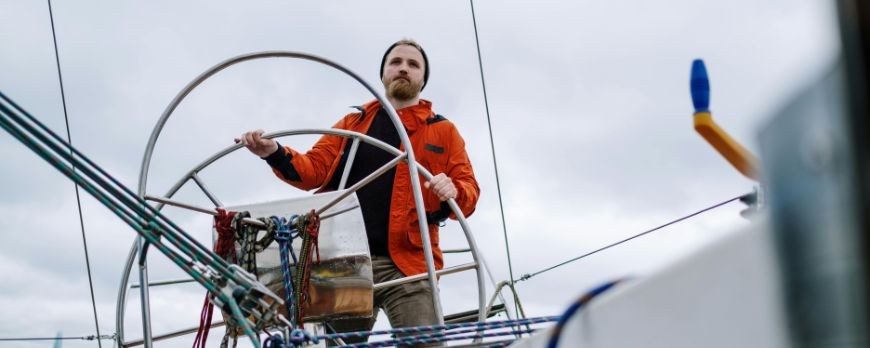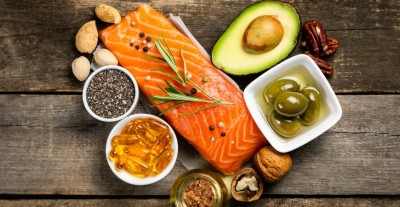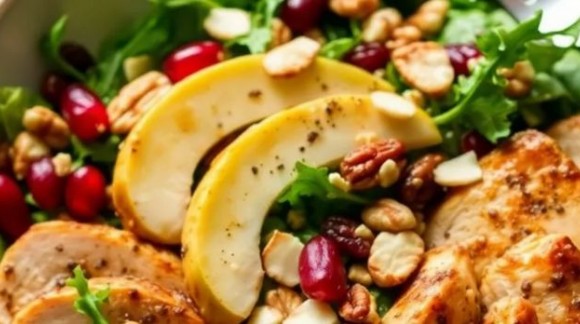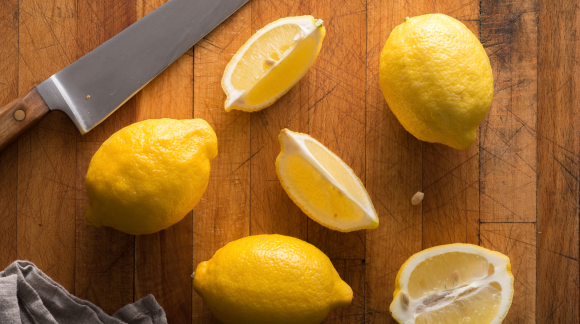Nutrition at the Vendée Globe. We decode for you the art of eating at high sea.
Nutrition at high sea: Deciphering the art of feeding in the extreme
The Vendée Globe. Three words that evoke achievement, isolation, and enormity. A modern odyssey where each sailor is left to himself, without stopovers, without assistance, in an intimate duel against the elements and against himself. If the adventure fascinates, it imposes a rigorous discipline, where every detail is optimized. However, among these details, one aspect is often underestimated yet proves to be crucial: nutrition.
Eating at sea is not a trivial act. Here, it is not simply about nourishing oneself, but about anticipating, adapting, and surviving. In the open sea, every calorie consumed, every gram embarked, every food selected is part of a well-thought-out strategy. Between logistical constraints, environmental challenges, and physiological imperatives, nutrition becomes a lever for performance as much as a resilience issue. How to eat effectively when space is limited, fatigue is looming, and even the slightest drop in energy can have dramatic consequences? How to maintain digestive balance when navigating in a hostile environment where thermal variations and humidity threaten the integrity of provisions?
1. Constrained nutrition: the science of foresight and pragmatism
1.1. Planning and anticipation: nutrition, a challenge well before departure
Unlike a traditional athlete, a Vendée Globe sailor cannot adjust his diet day by day. Each meal must be meticulously planned, often several months before departure. The slightest mistake in this area could compromise the entire adventure, directly impacting the physical and mental capacity of the skipper. Each chosen food follows a very strict logic:
✔ Optimal energy density: Favoring very high-calorie foods (nuts, oils, energy bars, concentrated pasta) allows to limit the weight and volume carried.
✔ Controlled conservation: At sea, there is no refrigeration. The majority of food must be freeze-dried, dehydrated, or vacuum-sealed in order to withstand extreme conditions of humidity and temperature for a long time.
✔ Practicality above all: Every meal should be able to be prepared quickly and simply. In the midst of a storm, it is vital to have meals that are easy to rehydrate or consume immediately, without actually cooking.
✔ Avoiding food fatigue: To maintain their appetite over several months, skippers plan a precise rotation of flavors and textures, incorporating varied dishes, comforting treats, and foods that are easy to consume even in case of seasickness.
1.2. When the environment dictates its laws: nutritional adaptation to extreme conditions
Offshore racing requires constantly responding to the physical constraints imposed by the environment. Depending on the latitude crossed, physiological needs change radically. Nutrition then becomes an essential adaptive variable.
✔ Facing the intense cold: In the southern seas, sailors face icy temperatures and extreme conditions. The nutritional response involves a significant increase in lipid intake (healthy fats such as oils, clarified butter, nuts) to generate enough body heat and resist hypothermia.
✔ Managing extreme heat and humidity: In equatorial zones, hydration is paramount. Sailors must constantly regulate their water and electrolyte intake (magnesium, potassium, sodium), consuming light, easy-to-digest foods, to avoid dehydration and digestive disorders related to the surrounding humidity.
✔ The ubiquitous impact of salt: The sea salt present everywhere attacks packaging, accelerates the deterioration of food, and complicates its preservation. Its excessive involuntary consumption can cause water retention, chronic fatigue, and disrupt digestion. Therefore, nutritional vigilance is essential.
✔ Preserving one's microbiota in a hostile environment: The lack of dietary diversity and the omnipresence of freeze-dried foods can significantly weaken the intestinal flora. Some skippers include specific probiotics, dried seaweed, or fermented preparations to maintain their digestive and immune balance throughout the journey.
2. On the plate of the Vendée Globe skippers
2.1. Embarked food: between performance and pragmatism
At sea, the food on board must primarily meet a dual requirement: it must be nutritionally sound and pragmatically logistical. In the confined space of a racing boat, food is rigorously selected to optimize every available square centimeter and each gram transported. That's why freeze-dried food constitutes the backbone of the nutrition on board the Vendée Globe today.
Originally from space research, freeze-dried meals offer a high energy density, excellent shelf life, and simplicity of preparation essential in a hostile environment. However, despite their many practical advantages, these meals also have obvious limitations in terms of taste and sensory experience. Food monotony, the often grainy texture, and the lack of taste variety can gradually erode the desire to eat.
To counter this fatigue, sailors often add highly appreciated complementary foods to their ration, which provide psychological comfort and additional nutritional value.
✔ Dried fruits and nuts: easy to store, rich in calories and essential nutrients (fats, magnesium, iron).
✔ Dried meats and fish: precious sources of high-quality protein to preserve muscle mass.
✔ Instant soups: Comforting, hydrating and convenient to consume in cold seas.
✔ Nut butters (almonds, hazelnuts): True energy concentrates, easy to consume in small quantities, even in full maneuver.
2.2. Sponsorship and dietary reality: what do sailors really eat?
Seeing a Vendée Globe skipper displaying food products from a renowned sponsor in the middle of a race seems to be proof of regular use. However, behind these media images often hides a much more nuanced reality. The question deserves to be asked: are these products really consumed on board in significant quantities, or do they mainly serve as a marketing showcase for the sponsoring companies ?
A notable case is that of Sodebo, a historic sponsor of many sailors. Although their ready-made meals are highlighted in their communication, their nutritional composition raises questions: often rich in preservatives, sugars, and saturated fats, these products do not perfectly meet the specific nutritional needs required by the environment of the Vendée Globe.
Thus, several sailors simultaneously develop a much more sophisticated nutritional strategy, optimized and specifically designed for their real physiological needs. These are often custom-made food solutions developed in collaboration with specialized nutritionists.
✔ Custom freeze-dried dishes: formulations adapted to the precise nutritional needs of the sailor (protein-carbohydrate-fat ratio, micronutrients, digestibility).
✔ Dehydrated artisanal recipes: dishes designed by the browsers themselves, rich in flavor and nutritional diversity, allowing total control over their composition.
✔ Specific complementation: Intake of essential micronutrients (omega-3, vitamins, minerals) chosen for their quality of absorption and their proven beneficial effect on long-term health and performance.
The reality, often unknown to the public, is therefore much more complex. Certainly, sponsored products may be on board for contractual reasons, but their regular and massive use is more about image than physiological reality. The majority of skippers actually adopt a highly personalized nutritional approach, focused primarily on performance, health preservation and their ability to endure the extreme rigors of the Vendée Globe.
3. Complementation and optimization strategies: beyond raw feeding
3.1. Micronutritional optimization: specific needs at sea
If nutrition forms the basis of a skipper's performance, the extreme constraints imposed by the Vendée Globe often require targeted nutritional supplementation. This supplementation aims to meet specific micronutritional needs that are difficult to fully satisfy with onboard meals, even when perfectly prepared. Among the supplements most commonly used by sailors in high seas, we notably find:
✔ The Omega-3 : You did not provide any text to translate. Could you please provide the text you want translated? Powerful anti-inflammatories that limit inflammation related to repeated efforts and severe weather conditions, also improving cognitive functions.
✔ The Magnesium : You did not provide any text to translate. Could you please provide the text you want translated? Essential for preventing muscle cramps, managing stress, and ensuring optimal recovery, often difficult to obtain through onboard nutrition.
✔ Probiotics : You didn't provide any text. Please provide the text you want to be translated. essential for preserving the integrity of the intestinal microbiota, often disrupted by a monotonous diet and extreme living conditions.
✔ Vitamin D : Particularly useful when exposure to the sun is limited, which is common in the southern areas where sailors spend several weeks without direct sunlight.
Thus, far from being an optional comfort, nutritional supplementation in the high seas represents a real strategic pillar, allowing to maintain the physical and mental balance essential for the success of this extreme adventure.
3.2. Adaptation at sea: permanent nutritional adjustments
Even with the most precise planning, every skipper faces physiological unforeseen events during weeks at sea. Accumulated fatigue, prolonged periods of bad weather, or even abrupt changes in temperature directly influence dietary habits. Skippers therefore must constantly adjust their nutritional strategy.
✔ Appetite reduction: Faced with stress and exhaustion, sailors often favor energy drinks or protein purees that are easy to ingest, ensuring a minimal energy intake without digestive difficulty.
✔ Climate variations: Depending on the regions they cross, sailors adjust their food intake. More fats in extreme cold, more hydration and quick carbohydrates in the tropics.
✔ Management of digestive balance: The regular intake of probiotic and prebiotic supplements helps maintain good digestion despite changes in diet and dietary monotony.
These constant adjustments, made in real time according to the sensations and conditions encountered, guarantee sailors a fragile but vital balance, allowing them to go to the end of this unparalleled physical and mental challenge.
Conclusion: Nutrition, the science of adaptation in extreme environments
The unique adventure of the Vendée Globe reveals how far nutrition is from being a simple matter of calories or tastes. At sea, eating becomes a complex strategic act, requiring anticipation, pragmatism and continuous adaptation to environmental constraints. Each skipper must deal with limited resources, significant physiological and logistical constraints, and constantly adapt their nutritional approach.
But this reality goes far beyond the scope of offshore racing. This need for constant adaptation is found in all human activities faced with extreme or constraining environments. Whether it's during an ultra-trail, a semi-autonomous hike, or a mountain expedition, nutrition always imposes the same requirement: optimize available resources, anticipate physiological needs, and adapt nutritional choices to an ever-changing environment.
Finally, the Vendée Globe reminds us of an often overlooked fact: nutrition is not a set science, but an art of constant adaptation, an ability to anticipate, understand, and react to the unexpected. And this valuable lesson applies far beyond solo sailing, to all those who, one day, choose to leave their comfort zone to go further, longer, more intensely.









